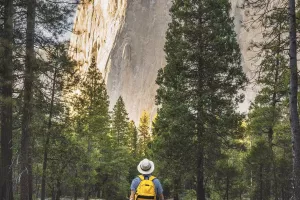Love them or hate them, there’s an unidentifiable mystery associated with caves and caverns. Some may find the idea squirm-worthy, but many of the best dive sites in the world are found within these underground holes.
The world’s caves hold plenty to explore from fish-filled sinkholes to gypsum-white caverns. Whether you’re an open water diver, a cavern diver or a full cave diver, these 5 awesome cave dive sites are sure to make you appreciate diving underground.
1. Cenote Angelita – Tulum, Mexico
One of the thousands of cenotes found on the Yucatan Peninsula, Cenote Angelita mystifies divers with its layer of hydrogen sulphate. This cloudy, almost mythical substance separates the incredibly clear fresh water from the salt water below at approximately 100 feet (30 meters). The cavern continues to drop to 200 feet (60 meters), but most divers will never make it that far. Be sure to take both your camera and your torch along for this dive!
2. Indian Springs (aka Sherlock Springs) – Florida, USA
Located on private property just south of Tallahassee, Florida, Indian Springs is often regarded as the best cave dive in North America. The main passage tunnel reaches 600 feet (183 meters) before coming to a T-junction. At this point, divers can turn right to head upstream or left to go downstream. There are several points of interest within the cave including the Bone Narcosis Room, the Wakulla Room and the Power Room. Most of these are best reached by use of diver propulsion vehicles. Keep in mind that the average depth for a dive in Indian Springs is between 120 and 180 feet (37 and 55 meters), making this a technical dive as well as a cave dive.
3. Ben’s Cave – Lucayan National Park, Grand Bahama
Lucayan National Park near Freeport, Grand Bahama is home to the longest freshwater cave system in the world. Measuring in at 6 miles (9.5 kilometers), the system is home to mosquito fish, shrimp, freshwater eels and an endemic species of crustacean. Although several caves exist, only Ben’s Cave is open to scuba diving. In addition to the fascinating mix of fresh and saltwater, you’ll also see stalactites, stalagmites and fossilized conch shells in the cave. Similar to the cenotes in Mexico, Ben’s Cave is ideal for novice divers wanting to try out the world of cave diving.
4. Nereo Cave – Alghero, Sardinia
Known as the largest underwater cave in the Mediterranean Sea, Nereo Cave sits between 50 and 100 feet (15 and 30 meters) off the coast of Alghero. Its sheer size as well as its arches and tunnels attract cave divers from around the world. Most dive profiles begin with a descent to 100 feet (30 meters) where the lowest entry to the cave can be found. Then divers move upward through a tunnel connecting a room full of outside light. From there, a wide tunnel hundreds of meters long, brings you back to the exit of the cave at 60 feet (18 meters). Because Nereo Cave is within recreational limits and is fairly simple to navigate, this Sardinian dive site makes a fantastic introduction to cave diving.
5. Kilsby’s Sinkhole – Mt Gambier, South Australia
One of the first sinkholes discovered in Mount Gambier, Kilsby’s Sinkhole has a fascinating history. Divers flocked to the area in the 1950s, often diving the caves with little prior training. After a tragic double-drowning the area became a weapons research center. Later an agreement was reached between the landowners and Australia’s cave diving association to once again make this a dive-able cave. The sinkhole itself is a 213-foot (65-meter) limestone cavity filled with crystal clear fresh water. It boasts both overhead and non-overhead environments.


